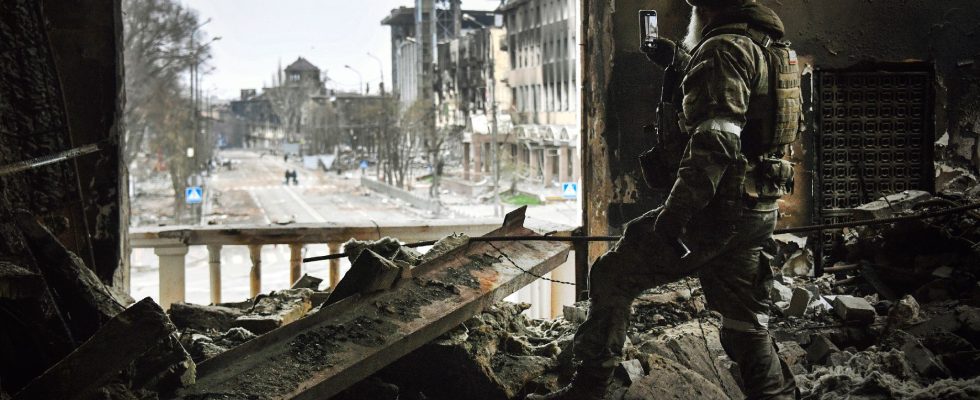The figure is dizzying: Ukraine would lose around 10,000 drones per month. This is the estimate made by a recent study fieldwork from the London think tank specializing in defense issues, the Royal United Services Institute (RUSI). Every day, hundreds of small Ukrainian aircraft are indeed subjected to Moscow’s countermeasures, thanks to powerful jamming systems, such as Shipovnik-Aero, placed about 7 kilometers behind the front, every 10 kilometers.
The longer the war drags on, the more the Russian army improves its tactical approach. Over the months, she manages to learn from her mistakes to adapt to her adversary, explains RUSI researchers, Jack Watling and Nick Reynolds, who collected the words of dozens of Ukrainian soldiers. Their report thus emphasizes how the Russian operational approach has evolved, posing new problems for their adversaries.
The Russian army no longer attacks the Ukrainian lines in the same way as it did in 2023. The RUSI confirms the information revealed in a tactical manual recovered by the Ukrainians in Russian positions. Each infantry unit has its own task: groups of infantrymen of two to five people are first sent into contact to identify Ukrainian positions or possible points of weakness, treated by artillery or more specialized sections. Very exposed, they progress under substance, like amphetamines, or to avoid being shot by other Russians.
More mobile Russian artillery
The Russian army has also taken the measure of the danger posed by the American Himars multiple rocket launchers, the precision of which wreaked havoc on their command centers and their ammunition depots during the summer of 2022. It thus dispersed the posts of officers transmitting orders, more often installed in underground structures, generally out of range of Ukrainian rockets. And to communicate, they go through the Ukrainian telecommunications network to avoid being geolocated.
Russian military strategists no longer use their artillery – Moscow’s major weapon – with the same intensity as in 2022, when 60,000 shells could be fired on some days. It is no longer the shells that go to the gun, only the reverse, the RUSI noting that the guns “move to a firing position where the ammunition will have been placed”, which makes their destruction more difficult. He notes that the responsiveness of this artillery “represents the greatest challenge for Ukrainian offensive operations”.
As for the tanks, they are used less to break through than to exert “fire support” against the positions of the Ukrainians and benefit more and more often from thermal camouflage. This limits the possibilities of destruction by anti-tank missiles delivered by the West to kyiv, such as the British Javelins. RUSI says engineer units, “one of the strongest branches of the Russian military”, have set up “complex obstacles and field fortifications”, which “pose a major tactical challenge to offensive operations “.
However, think tank researchers believe that Ukrainians have a number of advantages in regaining the initiative. First, the Russians are still struggling “to anticipate new threats” as well as to “coordinate” its various capabilities on the front. And it is not certain, notes the RUSI, that their infantry, with low morale, “can hold their own” if their firepower “diminishes”, in the face of well-trained Ukrainians who have the necessary equipment.
